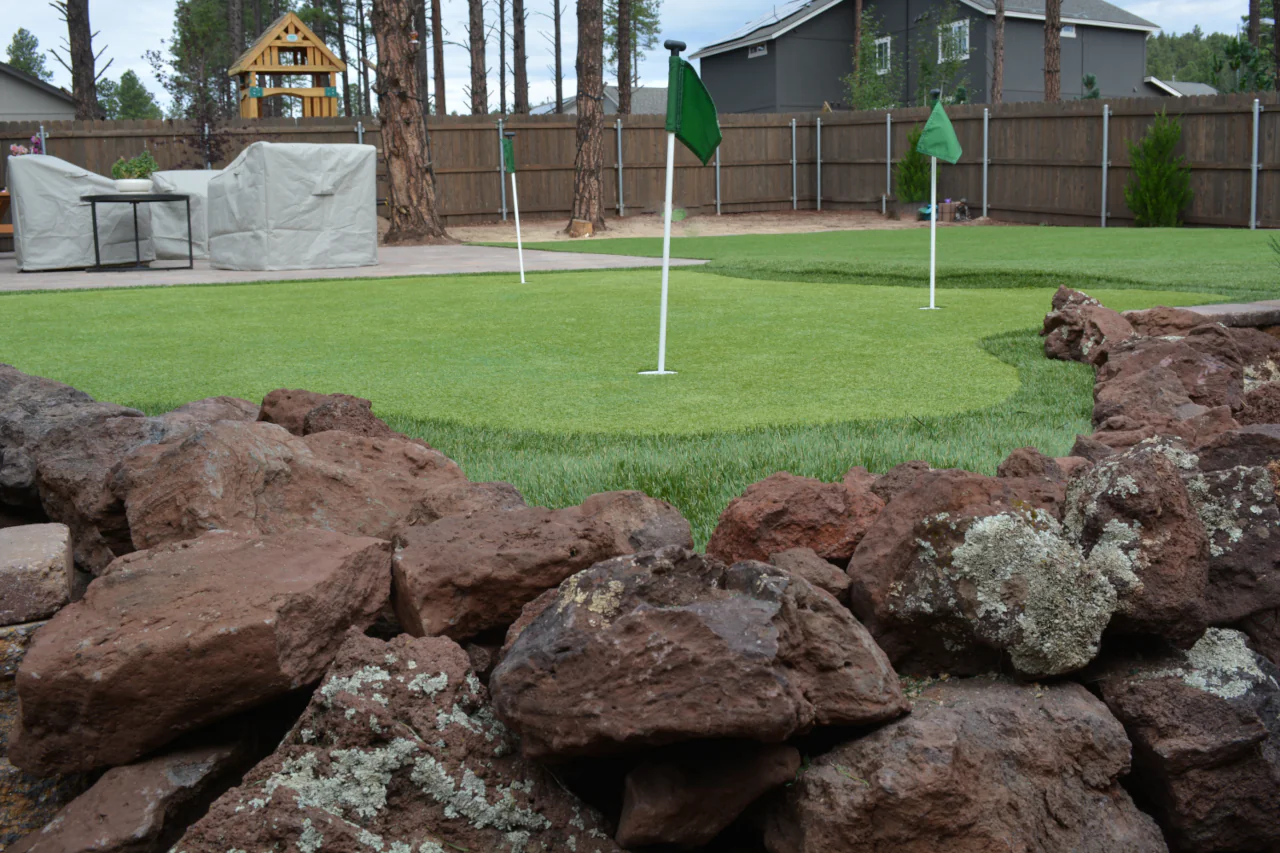How to Design a Three-Hole Practice Green

A three-hole practice green gives you a compact, fun way to boost your short-game performance without taking over the entire yard. This guide explains a thoughtful layout, easy pin placement ideas, which types of turf work best for a backyard putting green setup, and bite-sized practice routines. Sprinkle in a bit of imagination and a consistent practice routine, and you’ll be sinking more reliable putts in no time.
SIZE, SHAPE, AND HOW IT FITS THE YARD
Start by identifying a flat or mild-slope section that doesn’t conflict with walkways or landscaping. A typical three-hole green can be built in about 300–700 sq. ft., depending on how much walking you want between holes. Think of three zones that create interesting angles: a straight short-distance putt, a mid-length shot across a subtle slope, and a longer, breaking putt.
If you opt for a full synthetic grass installation, pick a spot with ample sunlight and consider how the runoff will drain there. Proper base work keeps the surface smooth and helps the turf play like natural greens. If you’re working with limited space, offset the holes so each one feels different without needing much extra material.
SMART LAYOUT IDEAS TO ENHANCE PRACTICE
Vary distances: aim for one short (6–10 ft.), one mid-range hole (12–18 ft.), and one long-range hole (20–35 ft.). That range requires different putting speeds and precision.
Use subtle contours: small bumps or gentle low spots add challenge without requiring major earthwork.
Create approach area options: include a small chipping area beside one hole so you can practice pitch-and-putt shots.
Edge details: a low-profile roll-up edge or small sand feature adds challenge and visual definition.
Throughout the layout process, share your preferred installation style — whether you want a full synthetic turf base or a partial renovation — because turf varieties act differently depending on prep work.
PIN PLACEMENT IDEAS FOR VARIETY
Rotate pin locations every session. Move pins to the front, middle, and back to create different break patterns. A simple system: ABC pin rotation where A = front, B = center, C = back. For extra challenge, place a temporary pin on the outer edge of a slight slope to improve slope reading.
Use removable cups or movable pin sets so you can swap pin positions without damaging the turf. Changing pins on synthetic turf putting greens is quick and lets you recreate tournament variety in a Las Vegas backyard setting.
SHORT PRACTICE ROUTINES FOR BUSY LIVES
No need for long practice blocks. Try three compact drills that pair with your three-hole design:
Speed Ladder (6–12 minutes): Start at the short hole and putt three balls from each range—short, mid, long—focusing on a repeatable putting stroke for each distance.
Break Read Drill (8–12 minutes): From a set position, putt to each of the three holes with the pin in a new position. Work on reading the slope and controlling speed.
Pressure Finish (5–8 minutes): Make two-putt cycles around the three holes. If you complete the circuit successfully, reward yourself with a harder approach next round.
Short routines like these keep progress steady and make practice easy to maintain. Mix them across the week for full-scope training.
